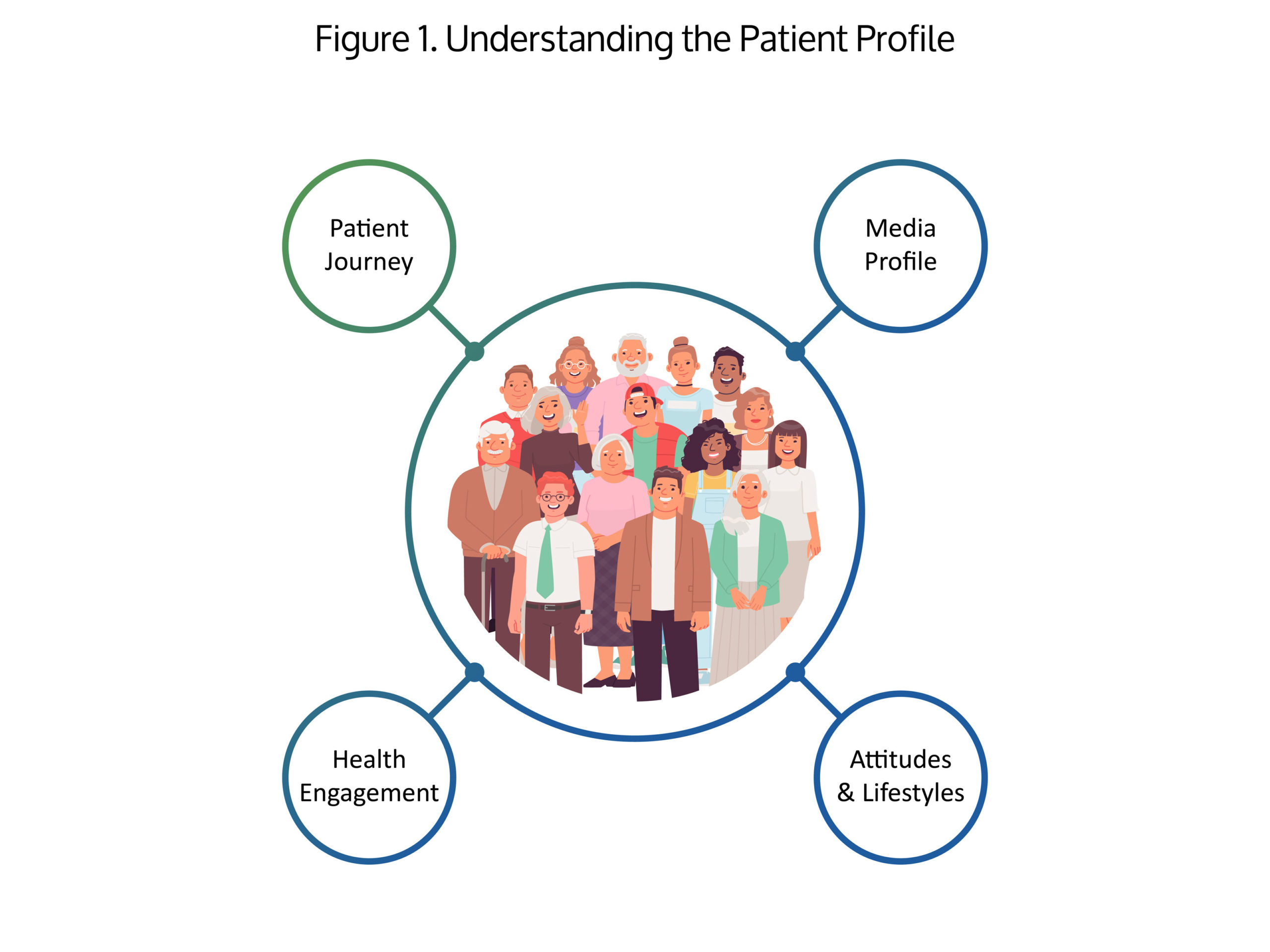It’s mid-year, which means pharma marketers are deep into brand planning for the next budget process. As we discussed in our last article, Planning is the first stage of a continual closed-loop marketing cycle, followed by Execution, and then Measurement, only to begin again. In this article, we’ll dive more deeply into planning, and demonstrate how having the right data sources and analysis frameworks can significantly enhance your branded promotion.
Let’s focus on Direct-to-Consumer (DTC) advertising planning. With over 20+ years of industry experience, we know the research required for this planning boils down to several core questions:
- Who are your patient targets?
- What are the best media channels for reaching them?
- How do I communicate to them in a relevant way?
Pinpointing the Who
Let’s start with Who are the right patients to target. We recommend targeting patients as a segment (for privacy reasons) and based upon behavioral health patterns. In particular, discover where in the patient journey your brand has the most potential to gain new patient starts.
A patient journey timeline reveals the specialist visits, diagnoses, and prior treatments that patients undergo before starting on your brand. Once analyzed, you can find which patients to focus on. For an established first-line drug, a valuable segment can be newly diagnosed patients. For a newer, second-line drug, a better segment could be one with patients who have been treated and failed with a key first-line competitor.
To conduct such a patient journey analysis, you want to find an analytics partner with extensive de-identified patient-level longitudinal data (DPLD), consisting of medical claims and prescription transactions. The patient coverage needs to be broad to cover even niche therapeutic categories, and there must be enough historical data to discover the right interactions. You’ll need specialized data mining skills to unearth these most common patient journey patterns.
Once you have identified Who you want to reach, you then want to understand What channels to use to reach them, and How to best communicate with them. As indicated in Figure 1, patient profile research covers demographics, attitudes, lifestyle preferences, and media consumption habits.
 Choosing the What
Choosing the What
Let’s dig into: What are the best channels to reach your target patients? You need to develop a media plan with the highest probability of reaching your target patients to get them to convert to your brand. In today’s hyper-fragmented media world, you want to answer many critical questions including:
- TV consumption: Are your target patients watching TV via cable package, satellite dish, live streaming, or a combination? Do they view it on a traditional set, laptop computers, or mobile devices?
- Genre preferences: What type of content is most often watched by this target segment: this can range across news, documentaries, family shows, sporting events, and many others.
- Audio consumption: Do they frequent online radio such as Pandora or Spotify? To what extent do they subscribe to podcasts?
- Social media preferences: Is this segment active on social media, even to the point of influencers, or are they neophytes? Facebook and Instagram show generational differences, but health information seekers may prefer informative newsfeeds like Twitter can provide.
To answer these questions, choose a data partner that can provide as much specificity as possible. Don’t settle for a general, limited, survey-based data set in which media habits are linked to demographics only. Ideally, you want a partner who can match media habits to the patient cohort with the medical history that you really want to target. Consider the difference in actionability between:
- What channels are consumed by Males 45-54? (general demographic)
Versus
- What channels and genres are consumed by Male 45- to 54-year-old Type 2 diabetics who are hypertensive and on an SGLT-2 inhibitor?
Every brand manager we speak with prefers the second example!
Determining the How
Now to the third major planning question: How do I speak to the target audience in a relevant way to motivate them to action? This answer will power the creative and messaging of your brand’s communications. One standard brand message won’t suffice for your particular patient segment; you should speak to this audience with empathy and understanding. To do so, we believe you need to understand two broad categories of insights:
A. Health Engagement:
- Healthcare system utilization: Do these patients frequently visit specialists? Do they use telemedicine? Are they often in the emergency room? Are they insured?
- Alternative treatments: Do the patients use aromatherapy, herbal remedies, or acupuncture as complements or alternatives to pharmaceutical products?
B. Attitudes and Lifestyles:
- Lifestyle preferences: How health conscious is this segment? Do they have a healthy diet or exercise? On the flip side, do they have bad health habits including smoking, alcohol, or junk food?
- Attitudes: Are these patients pro-environment? Are they technologically innovative? How trusting are they of medical experts?
- Socio-economic status: Even within an older generation, it helps to understand the mix of successful retirees, suburban middle class, and urban isolated.
- Hobbies and activities: Would this group relate to creative showing gardening, boating, or nature exploration? Or would sophisticated arts, music, or sporting events resonate more?
Again, answering these questions is best where they are specific to your prioritized health behavioral segments from the patient journey. With these answers, you can more rapidly generate test copy and creative storyboards, backed up by factual data. You can also increase your success rates at message testing research among patient focus groups. This combination will yield a more effective process for creative development.
In conclusion, DTC media planning that employs pertinent healthcare-transactional and consumer-attributed data can provide many advantages for your brand. Such planning lets you confidently develop targeted and tailored communications, deployed over channels that will reach your patients who ultimately get a prescription for your brand.
In our next article, we will detail how to leverage these specific brand plans as you execute your campaign in-market, the next step in your closed-loop.










